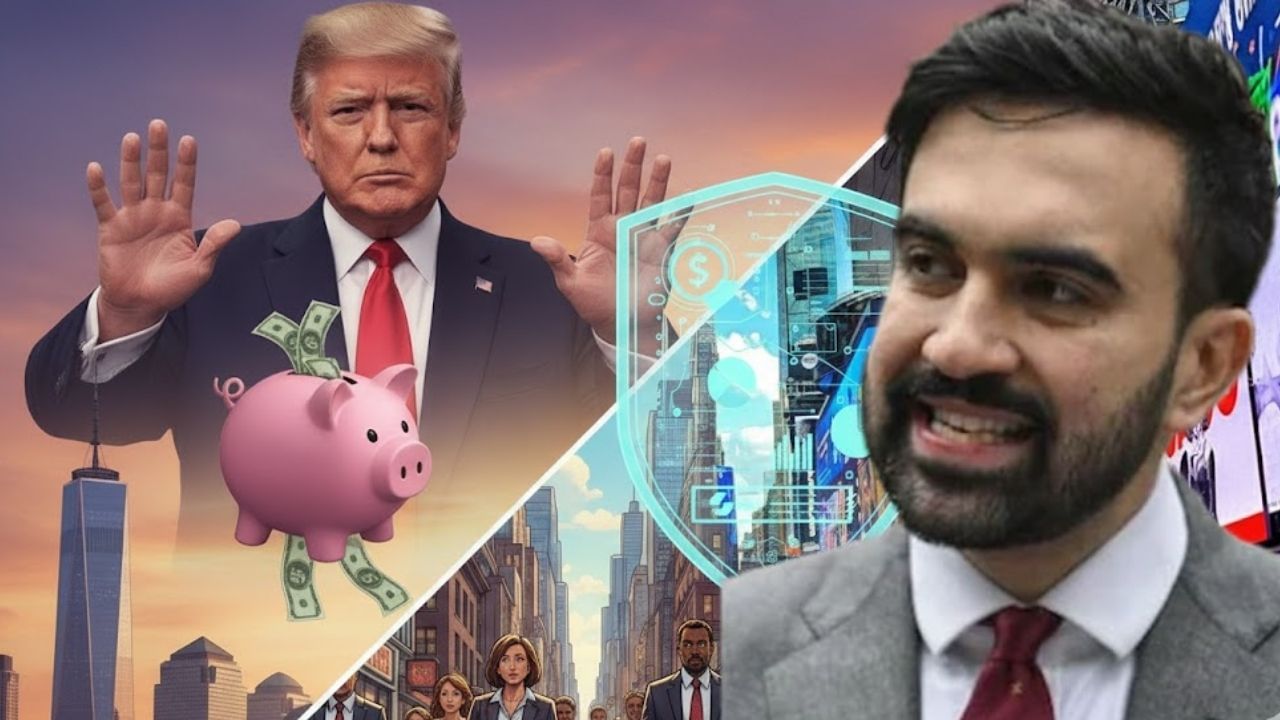Zohran Mamdani has won the election of New York Mayor.
In a major upheaval in American politics and amidst intense political tussle, Indian-origin Zoharan Mamdani has won the election of Mayor of New York City. This victory is also special because President Donald Trump had tried his best to defeat Mamdani. Trump had even said during the election campaign that if an opponent like Mamdani won, he would stop funding to New York City. Now that this city with a population of 85 lakh has elected Mamdani, the biggest question is whether Trump’s threat will bring New York to a standstill? Does this most powerful city in the world really run on the funds of the US government?
What is the reality of Trump’s threat?
First of all, it is important to understand that New York City is not run on Donald Trump’s ‘money’. The reality is that New York City has a large and self-sufficient budget, which depends largely on taxes collected from its own citizens.
The Trump government has no personal contribution to the city’s funding. In fact, his administration has made several attempts in the past to cut federal aid to New York. For example, his administration tried to block nearly $18 billion in funding for city infrastructure projects in 2024.
New York City does receive aid from the federal government, but it is a small portion of its total revenue (about 6.4 percent of total spending in fiscal year 2026). The city basically runs on the money of its 8.5 million residents, including 3.3 million expatriates and 8 million people of Indian origin.
How is New York’s treasury filled?
Now the question arises that if the city does not run on Trump’s money, then where does it get so much money from? The answer is, the people living there, i.e. ‘New Yorkers’. There is a fundamental difference between the tax systems of India and New York. In India we mainly pay income tax to the central government. No state government or municipal corporation (like Delhi or Mumbai) collects separate ‘city income tax’ from us on our salary. But this is not so in New York. There, along with federal (central) income tax, state (state) income tax, city income tax is also collected. This tax goes to New York City. This ‘City Income Tax’ is a major source of revenue for the city. Apart from this, there are many taxes from which the city earns.
- Property Tax: This is the largest and most important source of treasury of New York City. Nearly one-fourth of the city’s total revenue (about $35 billion) comes from property taxes alone.
- Personal Income Tax: This is the second largest source of revenue, earning the city approximately $18.4 billion.
- Sales Tax: When you buy something in the city, you have to pay sales tax of 8.875%. This is also divided between the state, city and transport authority.
Non-Tax Revenues
Apart from taxes, the city also earns money in many other ways.
- Charges for Services: Such as bills for water and sewer services.
- Fines and Forfeitures: Fines imposed for parking tickets, traffic violations or other violations.
- Licenses and Permits: Fees charged for permission to run a business, carry out construction work or provide any service.
- Interest and Rental Income: Interest earned from renting out the city’s own properties or from investments.
New York gives a lot in return for taxes
When New Yorkers pay such high taxes, what do they get in return? The answer is some of the best public services in the world that run 24 hours a day.
New York works on the ‘high-tax, high-service’ model. The largest part of your taxes is spent on city schools (free education). After this comes the world’s largest police department (NYPD) and fire department (FDNY), which handle the security of the city.
The 24-hour subway (metro) and buses (MTA), which are called the lifeline of the city, the huge street cleaning department (DSNY), which collects garbage every day and clears snow in winter, all run on this tax. Additionally, there is a vast public hospital network, thousands of parks, libraries and shelters for the homeless—all of which the city runs on its own.
